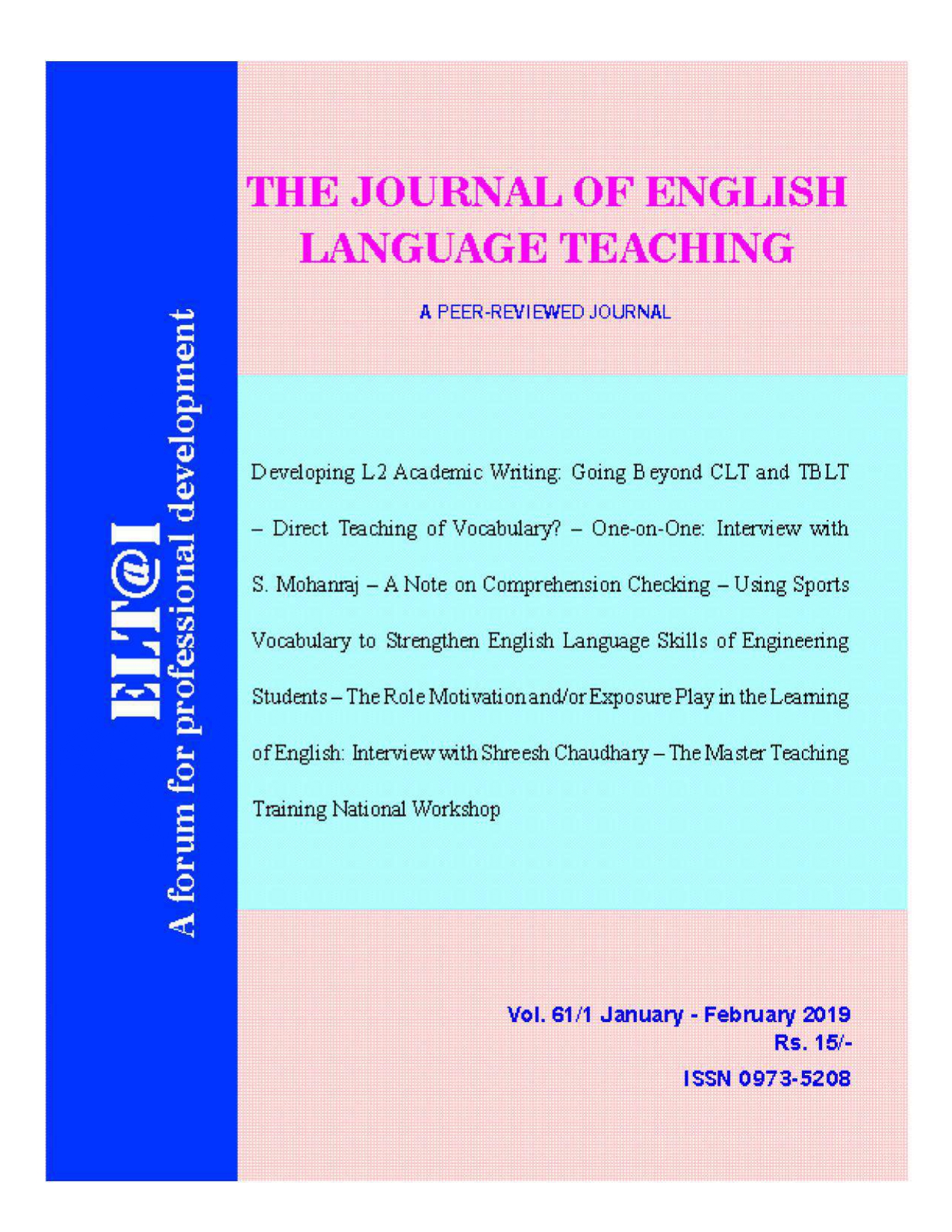Direct Teaching of Vocabulary?
Keywords:
Skill building approach, Teaching vocabularyAbstract
The goal of this paper is to discuss direct teaching of vocabulary using a skill-building approach and aiming at rapid mastery. This includes pre-teaching vocabulary before a story or reading a text, interrupting the reading or listening with vocabulary lessons, and post-story vocabulary instruction.
References
Beck, I., McKeown, M. and McCaslin, E. (1983). Vocabulary development: Not all contexts are created equal. Elementary School Journal 83: 177-181.
Ku. Y.M. and Anderson, R. (2001). “Chinese children’s incidental learning of word meanings.” Contemporary Educational Psychology 26: 249–266.
Mason, B. and Krashen, S. (2004). Is formfocused vocabulary instruction worth-while? RELC Journal 35 (2): 179-185.
Mason, B., Vanata, M., Jander, K., Borsch, R., & Krashen, S. (2009). The effects and efficiency of hearing stories on vocabulary acquisition by students of German as a second foreign language in Japan. The Indonesian Journal of English LanguageTeaching, 5(1), 1-14. http://www.sdkrashen.com/content/articles/mason_et_al._2009.pdf
Mason, B. and Krashen, S. 2010. The reality, robustness, and possible superiority of incidental vocabulary acquisition. TESOL Quarterly 44 (4): 790-792.
McQuillan, J. (2016). Time, texts, and teaching in vocabulary acquisition: A rebuttal to Cobb (2016). Reading in a Foreign Language, 28(2), 307-318.
McQuillan, J. We don’t need no stinkin’ exercises: The impact of extended instruction and storybook reading on vocabulary acquisition. Language Learning and Teaching. In press.
McQuillan, J. And then there were none? Measuring the success of commercial language courses. Language Learning and Teaching. In press.
McQuillan, J. and Tse, L. (1999).The authors respond. TESOL Journal 8(2): 6.
Nagy, W., Herman, P., & Anderson, R. (1985). Learning words from context. Reading Research Quarterly, 10(2), 233253.
Perry, K. (1993). Too many words: Learning the vocabulary of an academic subject. In T. Huckin, M. Haynes, and J.Coady (Eds.) Second Language Reading and Vocabulary Learning. Norwood, NJ: Ablex.
Ray, B., Ray, V. and Coxon, M. (2016). Ministories for Look, I Can Talk. Eagle Mountain, Utah: TPRS Books.
Seely, C. and Ray, B. (1999). Comments on Jeff McQuillan’s and Lucy Tse’s “What’s the story? Using the narrative approach in beginning language classrooms. TESOL Journal 8(2): 5.
Smith, R., and G. Supanich. (1984). The vocabulary scores of company presidents. Chicago: Johnson O’Conner Research Foundation Technical Report 1984-1.
Twadell, F. (1973). Vocabulary expansion in the TESOL classroom. TESOL Quarterly, 7, 61-78.
